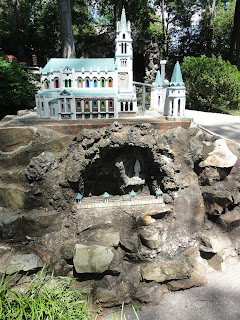I posted a blog article several years ago answering this question, but the question is asked frequently, so I'll answer again.
"Xeriscaping" is a blend of two words to combine their meanings into one concept. "Xeri" is derived from the Greek word,
xeros,
meaning dry. "Scaping" is derived from the word "landscaping." So the
blended word describes a manner of gardening that reduces or eliminates
the need for supplemental watering. Xeriscaping is appropriate for
regions that are naturally dry, for areas under water-use restrictions,
and for those gardeners who simply want to reduce the expense or
environmental impact of additional water use.
"Xeriscaping" is often associated with the accompanying logo, which, ironically, features a drop of water. The intent, I believe, is to emphasize that only a little water is needed for successful xeriscaping.
I recently journeyed through parts of Nevada, Utah, Colorado and Arizona where arid conditions prevail. Xeriscapes were in the majority. Grassy lawns were few. My eyes were opened to the many landscape designs that minimize the expense of irrigation and landscape maintenance, and to the vast array of plants that are suitable for xeriscaping. Far more are available than are used in other parts of the United States. These are things that desert-dwellers already know. They are relatively new to folks like me who are natives to humid, water-rich environments.
I have and will continue to feature plant species and designs that could save you a lot of time and money normally spent on conventional, high-maintenance landscapes. For past articles, check out this
search link on xeriscaping.
What do you think about this concept? Does xeriscaping sound interesting to you? Are there particular types of plants or landscape design applications that you'd like to learn more about? Let me know in the comment section.
Rate goGardenNow at the:







































